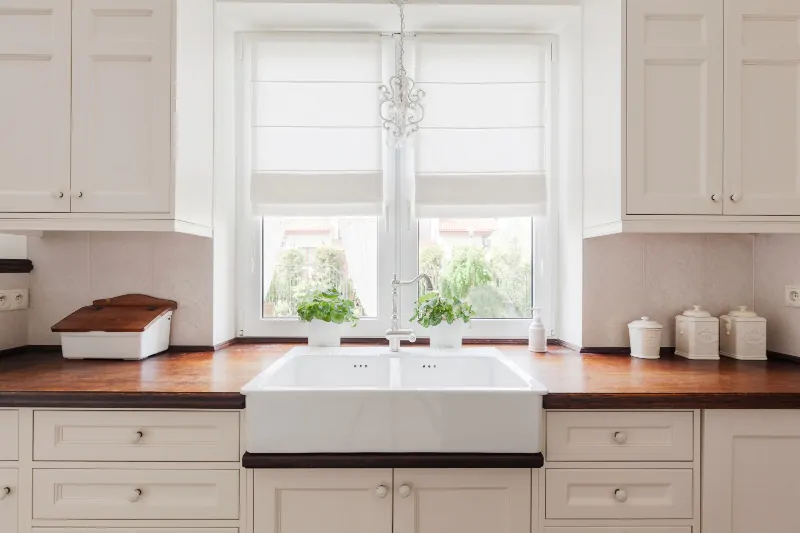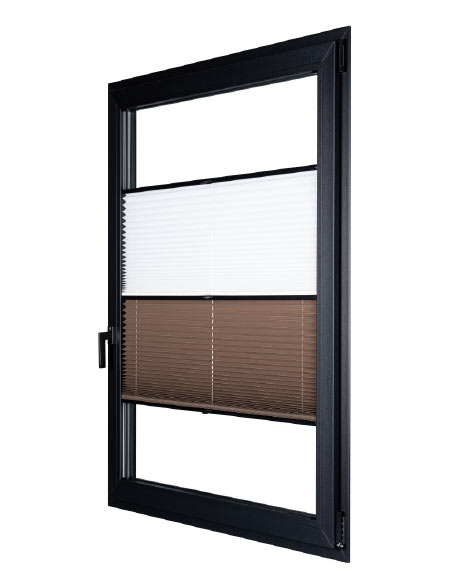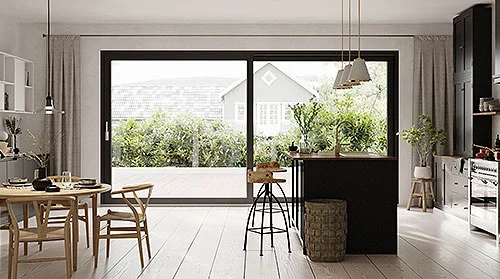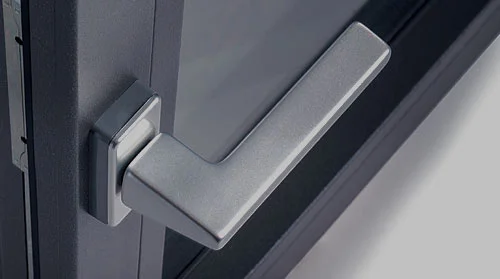Window blinds do more than just cover windows. They control light, provide privacy, and even improve energy efficiency. But choosing the right ones and installing them correctly? That’s where things can go wrong fast. Wrong measurements? Blinds won’t fit. Poor installation? They’ll sag or fall. Let’s break it all down, from picking the best blinds to mounting them properly. We will also cover how to add blinds to the top trending type of windows on the market – the tilt and turn windows.
1. Choosing the right window blinds for your space
Not all blinds work the same way. Some block light completely, while others filter it softly. Some are easy to clean, while others need more maintenance. The key? Choose based on functionality, aesthetics, and ease of use. Here’s a breakdown of the common types that you can find in many homes, from modern to traditional.
| Type | Features | Best For |
|---|---|---|
| Roller Blinds | Single fabric sheet that rolls up | Minimalist look, kitchens, and bathrooms |
| Venetian Blinds | Horizontal slats that tilt for light control | Offices, kitchens, versatile rooms |
| Roman Blinds | Fabric folds neatly when raised | Bedrooms, living rooms, elegant spaces |
| Vertical Blinds | Vertical slats for wide coverage | Large windows, sliding doors |
| Cellular Shades | Honeycomb design for insulation | Energy-conscious homes, bedrooms |
| Pleated Blinds | Foldable fabric, fits well on tilt and turn windows | Modern interiors, tilt and turn windows |
Each type has pros and cons, but the best fit depends on the size of your window, the amount of light you want to block, and your interior style. Remember that window blinds can work well with other types of window treatment ideas, you can read more about it in our comprehensive guide “Privacy and style: top window treatment ideas for your bedroom”

Venetian Blinds
2. How to measure your windows for the perfect fit
Measuring blinds wrong = frustration. Too small? Gaps let in light. Too big? They look messy. Here’s how to get it right the first time.
Decide on mounting type
- Inside mount: Blinds fit within the window frame for a clean, built-in look.
- Outside mount: Blinds extend beyond the window frame, offering better light blockage.
Measuring for an inside mount
- Width: Measure the inside of the frame at the top, middle, and bottom. Use the smallest measurement.
- Height: Measure from the top of the frame to the sill at three points. Use the largest measurement.
- Depth: Check if there’s enough space for the blinds to fit inside.
Measuring for an outside mount
- Width: Measure from one side of the area you want to cover to the other. Add 2–3 inches on each side for extra coverage.
- Height: Measure from where you want the blinds to start (usually above the frame) to where you want them to end.
- Extra tip: If you want a complete blackout, extend the blinds a few inches beyond the frame.
3. Step-by-step guide to installing window blinds
Installing blinds isn’t hard, but missing a step can cause problems later. Whether you’re mounting them inside or outside the window frame, the process is pretty similar.
You need:
- Drill & bits
- Screwdriver
- Measuring tape
- Pencil for marking
- Level
- Step ladder
When we gather all the necessary tools, follow these steps:
- Mark bracket positions
- Inside mount: Position brackets inside the frame.
- Outside mount: Hold the blind where you want it and mark screw holes.
- Drill pilot holes
- If mounting into drywall or masonry, insert wall plugs for secure screws.
- Attach the brackets
- Screw the brackets in place. For larger blinds, install extra support brackets to prevent sagging.
- Insert the blinds
- Roller blinds: Fit the control pin into the bracket and slide in the idle pin.
- Venetian/vertical blinds: Clip or snap the headrail into place.
- Secure the blinds
- Close any swing arms or locking mechanisms on the brackets.
- Install safety features
- Attach cord cleats or tensioners to keep cords away from children.
- Test the blinds
- Raise, lower, and adjust to ensure smooth operation.
It’s worth remembering that if your blinds aren’t operating smoothly, check for loose brackets or tangled cords. Following these steps should ensure smooth operation.
But what about homeowners who chose Tilt and Turn windows? Can you install blinds on them as well? Yes, absolutely! In the next section, we’ll take a closer look at the specific considerations for these windows.

Roman Blinds
4. Blinds for Tilt and Turn windows
Tilt and turn windows are great for ventilation, but traditional blinds don’t always work well with them. If the blinds aren’t secured properly, they might dangle or obstruct the window’s movement.
Why pleated blinds work best
- Stay in place: Fixed directly onto the window’s glazing bead, so they don’t move when tilting.
- Adjustable from top and bottom: Lets you control light levels without blocking the whole window.
- Custom fit: Made specifically for tilt and turn window frames.
- Sleek and modern: Fits seamlessly without bulky rails or cords in the way.
Tilt and Turn windows need blinds that move with them, not against them. Standard roller or Venetian blinds? Not ideal. They often hang awkwardly or get in the way when the window is tilted.
That’s why, for our OKNOPLAST PAVA, PIXEL, and aluminum MIRU EVO window lines, we designed our own pleated blinds—a sleek, functional solution that not only looks great but also operates smoothly while providing the privacy you need.

Pleated Blinds Comfort Duo Integra – Oknoplast
Why choose OKNOPLAST pleated blinds?
- Precise Fit: Designed specifically for tilt and turn windows.
- Customizable Options:
- 580+ fabrics (blackout, light filtering, energy-efficient materials).
- 14 profile colors (from classic white to wood grain finishes).
- Secure and Stable: No cords hanging loose, no shifting when tilting the window.
- Energy Efficiency: Helps reduce heat loss in winter and blocks excess sunlight in summer.
- Easy Installation: Mounted directly onto the glazing bead without damaging the window frame.
For those looking for a seamless and stylish solution, OKNOPLAST pleated blinds are the ideal choice.
Choosing and installing blinds with confidence
By now, you know exactly what goes into choosing, measuring, and installing window blinds. It’s a straightforward process when done step by step, but small mistakes can lead to blinds that don’t sit right or function properly. Measuring correctly ensures a perfect fit, and proper installation keeps them secure and easy to use.
Tilt and turn windows require a bit more consideration, as not every type of blind will work well with their movement. That’s why OKNOPLAST pleated blinds are designed specifically for them, staying in place no matter how the window is positioned while offering a clean, modern look.
If you’re looking for blinds that fit well and work smoothly with your windows, check out OKNOPLAST’s pleated blind collection or visit one of our authorized dealers for expert advice.
Continue Reading
Products.







